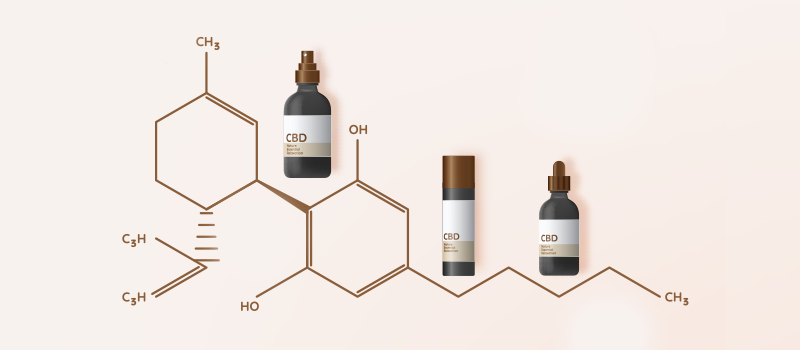What Are The Early Symptoms of ALS (Amyotrophic Lateral Sclerosis)?

Amyotrophic lateral sclerosis (ALS), previously called Lou Gehrig’s disease, is a motor neuron disease. These are neurological disorders in which there is a progressive loss of motor neurons, which are nerve cells in the brain and spinal cord that control voluntary muscle movement. Both upper motor neurons in the brain and the lower motor neurons in the spinal cord are affected. People with ALS experience progressive muscle weakness and loss of muscle control but usually retain mental function and sensations.
Risk factors for ALS development include genetics and family history (about 10% of cases are familial ALS or genetic ALS where a family member also has the condition). Environmental factors like viral infections, smoking, and environmental toxin exposure have also been linked to ALS. Military service is associated with an increased risk of ALS. Sporadic ALS when people with no family history or known risk factors develop ALS.
Please continue reading to learn more about ALS symptoms.
How long before you know you have ALS?
On average, it takes 9-12 months from the time that symptoms begin to the time that a person receives an ALS diagnosis. The time period is long because there is no specific test to diagnose ALS. Plus, the early signs and symptoms of ALS are often subtle and may be overlooked. However, diagnosing ALS early is important. There are drugs that can slow the progression of the disease, and the sooner you start these medications, the better the outcomes.
How does ALS start?
Amyotrophic lateral sclerosis (ALS) can look different in every person. The condition usually starts in the limbs (hands, arms, feet, and legs) when motor neurons that control voluntary movements are affected. Other parts of the body become involved as the disease progresses. This is called limb onset ALS. As more nerve cells die, the muscles become progressively weaker. Over time, the motor neurons that control muscles needed for speaking, chewing, swallowing, and breathing become involved. When symptoms start with speech or swallowing difficulties, it is called bulbar onset ALS.
What do the early stages of ALS look like?
ALS does not start abruptly. In the early stages, many ALS patients think nothing of their symptoms, which can be subtle enough that they do not register as unusual or something that needs to be evaluated. For example, initial symptoms may include trouble buttoning shirts, opening jars, unlocking doors, dropping things more often, or stumbling while walking.
What are usually the first signs of ALS?
-
General tiredness and loss of muscle strength.
-
Muscle weakness in the upper limbs. One hand or arm may become weak, followed by the other a few weeks or months later. This can result in difficulty with daily tasks such as buttoning shirts, opening jars, or unlocking doors. It can also result in clumsiness and dropping things more often.
-
Muscle weakness in the lower limbs. One leg may become weak first, resulting in tripping, stumbling, and falls. Over time, the other leg also becomes weak, making it difficult to walk.
-
Slurred speech, thick speech, or nasal speech due to weakening of facial muscles. Difficulty projecting the voice.
-
Trouble chewing and swallowing due to weakness of the face and tongue muscles.
-
Muscle cramps and stiffness that interfere with normal movement.
-
Muscle twitches in the hands, feet, and tongue.
-
Difficulty breathing and shortness of breath (this is uncommon in the early stages).
-
Uncontrolled and untimely crying or laughing (this is called pseudobulbar affect, and it occurs due to a disruption in the neural circuits in the brain).
-
Changes in thinking and behavior.
-
Respiratory failure as ALS progresses.
How is ALS diagnosed?
There is no test that can be used to make a definitive diagnosis of ALS. A comprehensive diagnostic workup includes a thorough neurological examination, an electromyogram to check the electrical activity in the muscles, a nerve conduction study to check for nerve damage, and magnetic resonance imaging (MRI) to obtain detailed images of the brain and spinal cord. In addition, healthcare providers may order blood tests, urine tests, lumbar puncture (spinal tap), muscle biopsy, and nerve biopsy to rule out other causes for the symptoms.
How is ALS treated?
There is no known cure for ALS, and the damage to the motor neurons is permanent. There is also no treatment at present that can stop or reverse the progression of ALS. However, the U.S. Food and Drug Administration (FDA) has approved certain drugs for treating ALS that can help to manage symptoms, slow the rate of decline, and prolong survival. Some of the medications used for ALS treatment include:
Riluzole (Rilutek, Tiglutik, Exservan)
Riluzole is an oral medication that has neuroprotective effects. It can increase the life expectancy of ALS patients by about 25%. Possible side effects include dizziness, drowsiness, weakness, trouble sleeping, and liver problems.
Edaravone (Radicava)
Edaravone medication is an antioxidant that slows the damage to the motor neurons and helps to preserve muscle function. It comes in the form of an oral liquid to take by mouth. It can also be given by intravenous injection. The dosing is daily for 2 weeks in a month. It is unclear if this medication for ALS affects lifespan. Possible side effects include headache, bruising, and difficulty walking.
Sodium phenylbutyrate and taurursodiol (Relyvrio)
Relyvrio medicine is a prescription oral medication for ALS that was approved by the FDA in 2022. It slows disease progression and functional decline by about 25% and may help people with ALS live approximately 6 months longer. It comes in the form of a powder to be mixed with water at room temperature. Possible side effects include nausea, diarrhea, stomach pain, and upper respiratory infections.
Other medications
People with ALS may be prescribed medications to relieve muscle cramping and manage symptoms such as fatigue, constipation, excessive saliva or phlegm, sleep difficulties, urinary urgency, leg swelling, bladder control, uncontrolled laughing or crying, and depression.
Therapies
ALS patients can benefit from a range of therapies, including:
-
Respiratory therapy and the use of devices such as a mechanical ventilator. In the later stages of ALS, it may be necessary to create a tracheostomy (a hole in the trachea or windpipe through which a tube is connected to a respirator to help with breathing). A laryngectomy surgery may be done to prevent food from entering the windpipe and lungs.
-
Physical therapy to strengthen muscles and help with mobility. Low-intensity exercises can help to maintain flexibility, strength, and range of motion and improve overall well-being. Stretching can help relieve muscle stiffness. The use of a brace, walker, wheelchair, or other equipment can help a person stay independent for longer.
-
Occupational therapy can help a person with ALS remain independent. Adaptive equipment for eating, bathing, grooming, and dressing may help. Occupational therapists also provide guidance on home modifications for accessibility and safety.
-
Speech therapy includes adaptive techniques to improve understanding of a person’s speech or teach them other ways to communicate, such as pen and paper, alphabet boards, smartphone apps, and text-to-speech apps.
-
Nutritional guidance to plan meals that are nutritious and include foods that are easier to swallow. In the later stages of ALS, patients may need a feeding tube.
-
Social support to help with legal, insurance, and financial issues. Mental health care for emotional support for the person with ALS and their family.
What is the life expectancy for ALS cases?
Most people with ALS die within 2-5 years of the diagnosis. However, some people can live for many years, even decades. The famous physicist Stephen Hawking lived for more than 50 years after he was diagnosed with amyotrophic lateral sclerosis (ALS).
References:












SOCIAL